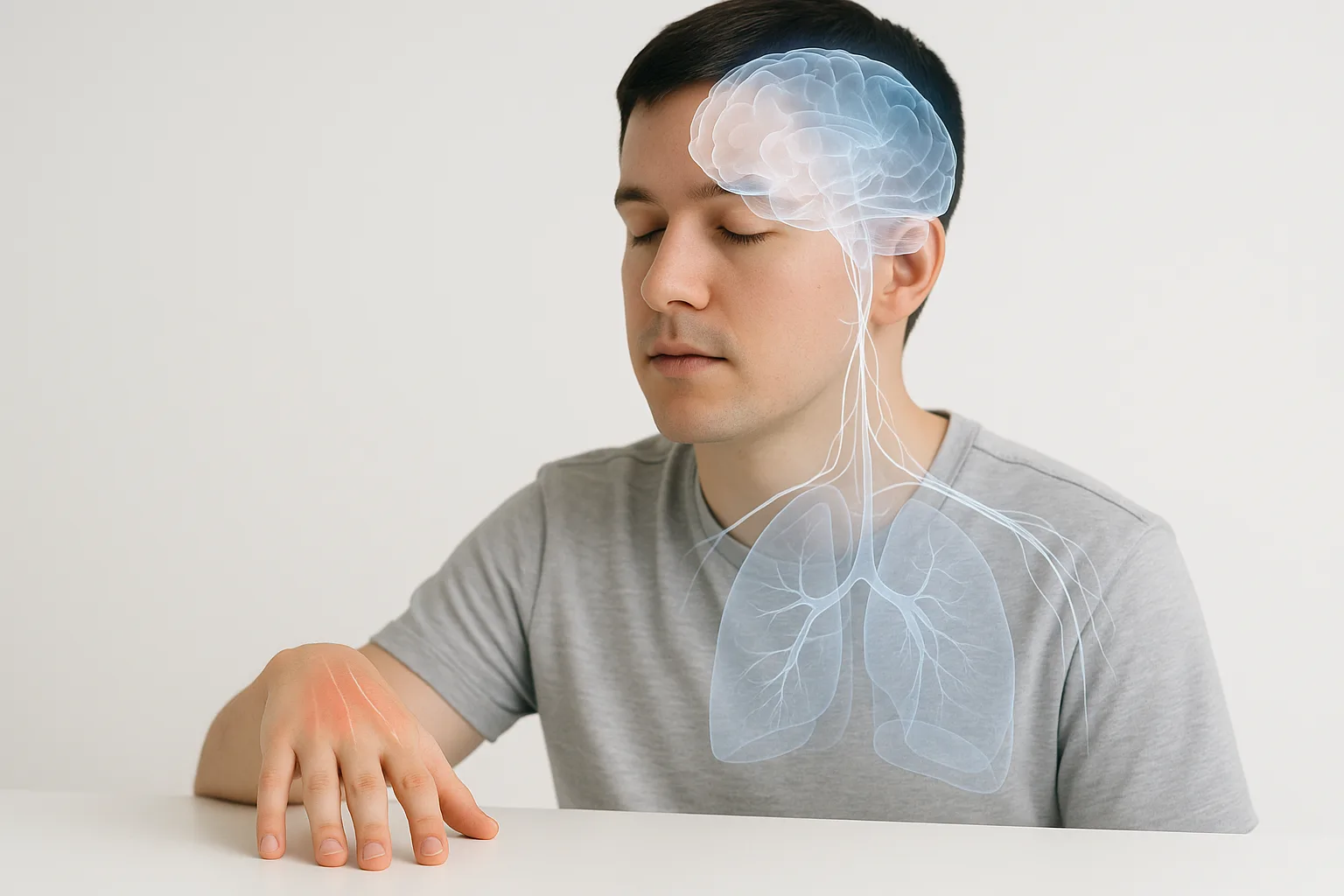Your brain does not sense your body directly.
Instead, it creates a constantly updated internal map based on signals from your skin, muscles, joints, eyes and balance system. Sometimes this map becomes inaccurate. When that happens, you may feel like your hand is somewhere it is not.
This phenomenon is known as the misplaced hand illusion, and the misplaced hand illusion test shows how easily your brain can miscalculate the position of your own limbs.
This glitch exposes how your brain constructs body awareness, how quickly perception can shift, and how fragile your sense of “where your body is” really is.
Let’s begin.
Step 1 — Place Your Hands on a Table Without Looking at Them
Sit down at a table.
Put both hands flat on the surface.
Spread your fingers naturally.
Now look straight ahead and avoid looking at your hands.
Why this matters
Your brain begins relying on memory, proprioception and internal mapping instead of vision.
This sets the stage for the misplaced hand illusion test.
Step 2 — Close Your Eyes and Move Only One Hand Slowly
Move your right hand:
- forward
- backward
- left
- right
Do it slowly and gently.
What you’ll notice
You can feel where your hand is, but the sensation is less precise without vision.
Your internal body map becomes more active.
This is where the illusion begins forming.
Step 3 — Return Your Hand to the Table and Try to Guess Its Position
With your eyes still closed, place your hand back somewhere on the table.
Do not try to align it perfectly.
Just rest it where it lands.
Now guess
Try to point to the exact location of that hand using your other hand.
What happens
Most people point slightly:
- too far left
- too far right
- too forward
- too backward
Your brain slightly miscalculates the real position of your own limb.
Step 4 — Try the Same Test but With Faster Movements
Move your right hand more quickly before placing it back down.
Why this changes the illusion
The faster the movement, the less accurate your proprioception becomes.
Your brain struggles to update your body map in real time.
This deepens the misplaced hand illusion test.

Step 5 — Create the “Crossed Arms Illusion”
Cross your arms on the table with eyes closed.
Now use your left hand to touch where you think your right hand is.
What you’ll notice
Your guess is often wrong.
Why
Crossing the arms confuses:
- spatial mapping
- left/right orientation
- midline crossing processing
Your brain misinterprets your limb position because the configuration is unnatural.
Step 6 — Try the “Invisible Hand Shift”
With eyes closed:
- Lift your right hand slightly
- Move it to a new position
- Keep your arm relaxed
- Try to point to the new location using your left hand
Result
Your guess becomes even less accurate.
Your internal body map updates slower than your actual movement.
This is the core of the misplaced hand illusion test.
Step 7 — Use a Surface With Different Texture
Place your hand on:
- fabric
- smooth wood
- cold metal
- your lap
- a cushion
Then repeat the guessing test.
Why this works
When tactile feedback changes, the brain anchors the hand’s position differently.
This disrupts the body map and increases positional errors.
Step 8 — Add a Visual Delay to Increase the Illusion
This step is powerful if someone helps you.
Ask someone to gently touch your hand one second after you expect the touch.
For example:
- You place your hand down
- They wait
- Then they touch
What happens
Delayed feedback makes your brain miscalculate position even more.
The brain expects touch at a specific moment — when delayed, the map shifts incorrectly.
This dramatically increases the illusion.
Step 9 — Introduce the “Phantom Position Shift”
Do this alone:
- Close your eyes
- Raise your right hand above the table
- Move it slightly forward
- Hold it there for 10 seconds
- Then, without touching the table yet, guess its exact height and distance
What you’ll notice
Your estimates become vague.
Your brain loses track of arm elevation faster than horizontal position.
Humans are notoriously bad at sensing vertical limb position without vision.
This effect reinforces the misplaced hand illusion test.
Step 10 — What This Brain–Body Glitch Reveals About You
The misplaced hand illusion test reveals powerful insights about your internal body mapping:
1. Body position is constructed, not sensed
You do not directly “feel” where your hand is — your brain estimates it.
2. Vision dominates proprioception
Removing visual feedback weakens accuracy dramatically.
3. Movement reduces precision
Faster or unusual movements confuse the body map.
4. Texture influences spatial perception
Touch affects positional awareness.
5. Delayed feedback alters body mapping
Timing is as important as touch.
6. Humans misjudge limb elevation
Vertical proprioception is one of the weakest senses.
7. The brain constantly predicts your hand’s location
When prediction is wrong, the illusion appears.
Your sense of body position is less precise and more flexible than it feels.
This glitch shows how dependent you are on vision and prediction.
Try the Next Brain–Body Glitch Experiment
If this illusion revealed how your brain miscalculates body position, the next experiment shows how your brain misinterprets movement itself. You will learn why you sometimes feel movement even when nothing is moving.
Next recommended experiment:
The Motion Aftereffect Illusion — Why You Still Feel Movement After It Stops
